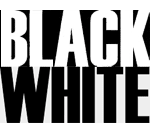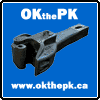Colonial Red Part 3

The Canadian Pacific Railway station at Kentville, Nova Scotia - 1973 Nick DeWolf
 Introduction Introduction
Why is this article titled
"Colonial Red" when the photographs are black and white? Ah... therein lies the story.
Most rail fans have heard the story how Canadian Pacific Railway's steel passenger equipment came to be painted that
colour. Originally CPR passenger cars were constructed of Mahogany wood which has a reddish colour. The wood was covered by several coats
of varnish to protect it. (This produced another name for passenger cars, "Varnish", which came to mean sparkling first class
passenger rolling stock.)
When steel passenger cars were introduced the paint applied appears to be an attempt to match this Mahogany colour. This
may or may not be true, who knows? Early paint pigments were produced from iron oxide which has a brownish-red or rust colour to it. This
paint was inexpensive to manufacture and found widespread use on barns, buildings, and box cars around the turn of the century.
Now let's talk about colour itself, a very subjective topic. Colour is how the eye interprets light reflected from a
surface. The material reflecting the light determines the colour. The amount and angle of the light reflected can also change the colour.
The time of day can change colour, likewise, atmospheric conditions change colours we see. This also doesn't take into account fading of a
painted surface. Your computer's monitor can be used to show the effect of brightness. Too bright and the colours are washed out, faded.
Too dark and you can't see the details plainly. Test this for yourself.
Is it any wonder rail fans use multiple names for the colour of CPR's equipment? Tuscan, maroon, boxcar red, CPR red, and
just plain red. But I'm talking about Colonial Red here. I'll define Colonial Red for you this way, so there won't be any argument. Look
at this photo of a Canadian Pacific Railway tender. The tender is basically black except for the sides. There is a "Deluxe Gold"
(yellow) trim around a Colonial Red panel on each side, with the words Canadian Pacific, also
lettered in Deluxe Gold.
Now you know what colour I'm talking about here, but where did this name Colonial Red come from? Most people seem to call
this colour Maroon. Let me tell you why I call it Colonial Red. It's not just because it sounds classy, and that it has a historical
flavour to it, but that certainly helps.
Many years ago while attempting to match this colour for a structure painting project I visited the CPR Bridge and
Buildings Department at Kemptville, Nova Scotia. My hope was to obtain some actual "CPR paint". They didn't have any, but told
me it was mixed by a local hardware company, to their specifications. Now you rail fans who know the history of CPR and the Dominion
Atlantic will know this Maritime railway has been around for quite some time. What you may not know is Maritimer's are very aware of
their history and how things came to be the way they are today. When it came to their railway paint these CPR Kemptville employees were
quite sure of that too. They called it Colonial Red.
You won't find much Colonial Red today. 2816's running boards, it's tender, the Royal Canadian Pacific excursion
equipment, the Historical Display cars, Track Evaluation Car 63, and the odd business car. Colonial Red buildings are also disappearing
fast. There are a few stations remaining still painted in Colonial Red but they exist now as museums. Some have undergone repainting over
the years and the current colours don't reflect the original colours.
This brings us full circle to the above mentioned title. This article is a photo essay on CPR equipment photographed
during CPR's Colonial Red era, or what was left of it at the time. All the attached black and white photos were collected from the
internet over a period of time. If a photographer's name is unknown, and you know who should be credited, please advise me so that I may
correct the error.
I hope you enjoy this collection from Canadian Pacific's Colonial Red period. It may bring back memories for some of
you older readers.
 The Photographs The Photographs
|

Elesco Feedwater Heaters.
|

Temporary station.
|

Drake Street.
|
|

Royal Hudson Pier BC
|

Mud Lake Bridge.
|

Hayrack Observation.
|
|

Ottawa Union.
|

Shop Switcher.
|

Sudbury Ore Train.
|
|

Selkirk Field.
|

Big Hill Tripple-Header.
|

Yoho Double-Header.
|
|

Smoking Brake Shoes.
|

Kipawa Junction Mixed.
|

In the Hole.
|
|

Fredericton Fords.
|

Taking Water.
|

Ville Marie Stop
|
 Associated Web Sites Associated Web Sites
Canadian Pacific Railway
Canadian Pacific Historical Association
Additional CPR Web Sites

Vancouver Island
British Columbia
Canada
|